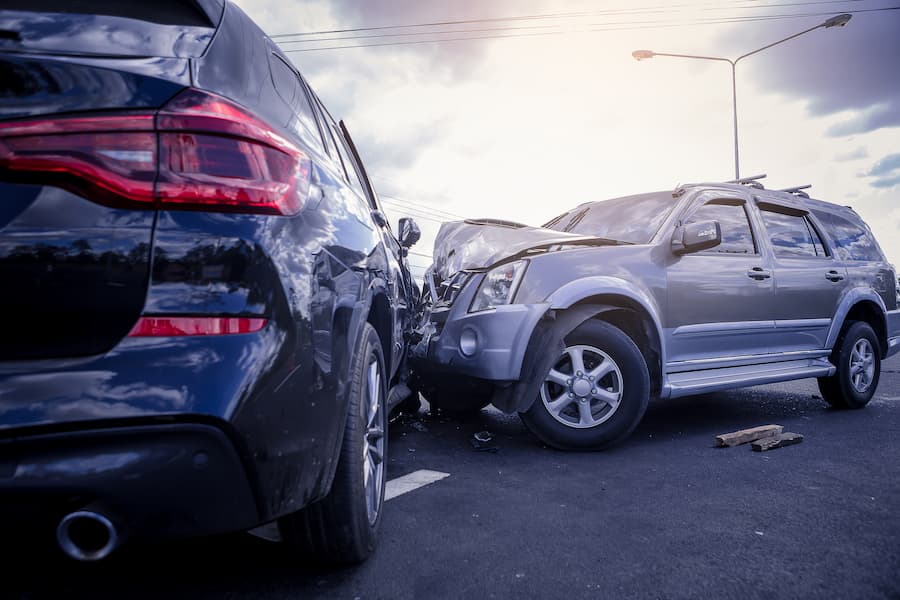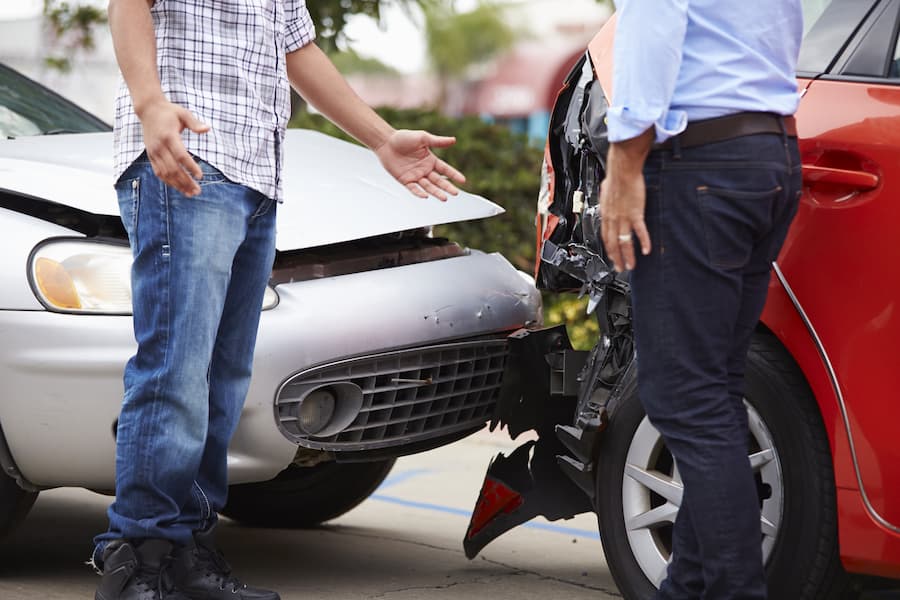Car accidents sometimes happen when drivers abruptly pull out in front of other vehicles. In these cases, the driver who pulls out in front is likely at fault. To recover compensation, the accident victim will need to demonstrate that the driver who pulled out acted unreasonably under the circumstances – and, as a result, the accident and injuries occurred.
A skilled car accident lawyer in Edmonton can gather the evidence necessary to prove your case so that you can recover the financial compensation you deserve.
Why a Negligent Driver May Pull Out in Front of You

When driving, encountering a negligent driver pulling out in front of you can be both frustrating and dangerous. There are several reasons why this may happen, often linked to carelessness or distractions.
- Many drivers simply fail to check their surroundings properly before merging or pulling out. They may not look both ways or check their blind spots, assuming that the coast is clear when it is not. This lack of vigilance can lead to accidents, especially in busy or fast-moving traffic.
- Distractions are a significant factor. In today’s technological world, drivers often become distracted with their phones when texting, talking, or using navigation apps. Even a momentary lapse in attention can cause a driver to miss seeing an oncoming vehicle. Other distractions include eating, adjusting the radio, or talking to passengers, all of which can take a driver’s focus off the road.
- Impatience plays a role. Some drivers are in a rush and take unnecessary risks to save a few minutes. They may pull out into traffic without waiting for a safe gap, believing that other drivers will slow down or stop to let them in. This behaviour is particularly dangerous and reflects a lack of consideration for others’ safety.
- Another reason is the misjudgment of speed and distance. Some drivers may miscalculate how fast an approaching car is travelling or how much time they have to pull out safely. This can happen due to inexperience, poor depth perception, or simply bad judgment. When a driver underestimates the speed of an oncoming vehicle, they may pull out too soon, causing a collision.
- Weather and road conditions can also contribute to these accidents. It can be harder to see oncoming traffic in poor visibility conditions like fog, heavy rain, or snow. Drivers may not see your car until it’s too late – especially if they are speeding or violating other road rules. Drivers should use extra caution in poor weather; if they do not, they might pull out right in front of you without knowing.
Lastly, some drivers are simply reckless. They may habitually drive aggressively, disregarding traffic rules and the safety of others. These drivers are often the most dangerous because they are unpredictable and prone to making sudden, risky maneuvers.
Injuries in Accidents that Occur When a Driver Pulls in Front of You
Accidents that result from a driver pulling out in front of you can lead to a range of injuries, varying in severity depending on the speed and angle of impact. These injuries can be life-altering and sometimes fatal.
- One common type of injury in these accidents is whiplash. Whiplash occurs when the sudden impact forces your head to snap forward and then back quickly, straining the muscles and ligaments in your neck. Symptoms may include neck pain, stiffness, headaches, and sometimes dizziness or blurred vision. Whiplash can take weeks or even months to heal, and in some cases, it can lead to chronic pain.
- Back injuries are also common in these accident scenarios. The force of a collision can cause herniated discs or spinal fractures. Back injuries can be extremely painful and may limit your mobility. Severe spinal injuries can even result in paralysis, significantly affecting your quality of life and requiring long-term medical care.
- Head injuries are also a serious concern. Even with airbags, the force of a collision can cause your head to hit the steering wheel, dashboard, or window, leading to concussions or other traumatic brain injuries (TBIs) that cause long-term cognitive impairment, memory losses, or even personality changes.
- Chest injuries are another risk, particularly from an impact with the steering wheel or seat belt. Rib fractures, lung injuries, and heart contusions can occur – especially in high-speed crashes. These injuries may cause severe pain and may require extensive medical treatment and recovery time.
- In addition to these complications, injuries to the extremities – such as broken arms, legs, or wrists – are common. The sudden impact can crush limbs against parts of the car, leading to fractures or dislocations. Such injuries may need surgical intervention and extensive rehabilitation.
- Furthermore, internal injuries are often not immediately visible but can be life-threatening. Damage to organs like the kidneys, spleen, or liver can cause internal bleeding that requires urgent medical attention.
- Psychological injuries should not be overlooked, either. The trauma of a serious accident can lead to conditions like post-traumatic stress disorder (PTSD), anxiety, and depression.
Proving that Another Driver was Negligent for Pulling Out in Front of You and Causing an Accident

Proving that another driver was negligent for pulling out in front of you and causing an accident involves gathering evidence and demonstrating that the other driver failed to exercise reasonable care under the circumstances. Here are some key steps to prove negligence:
- Always call the police and file a report after any type of collision. The police will document the accident, interview both drivers and any witnesses, and note any traffic violations. A police report can be a key piece of evidence in proving the other driver’s negligence. Your car accident lawyer can obtain the police report, ensure it includes accurate information, and use it to prove liability.
- Next, your attorney can gather witness statements. If there were witnesses, they can provide a brief statement about what they saw to insurance companies or in court. Witnesses can offer an unbiased perspective that supports your version of events. They have no direct interest in the case, so their testimony can be persuasive.
- Additionally, your lawyer can obtain any available traffic camera or surveillance footage. If the accident occurred near an intersection or a business with security cameras, the footage may capture the moment of the crash and show the other driver pulling out in front of you. This can be compelling evidence, as it is difficult to argue with video.
After gathering initial evidence, your car accident lawyer will use the evidence to prove the legal elements of negligence. To prove negligence, you must establish four elements:
- Duty of Care – Show that the other driver had a duty to drive safely and follow all traffic laws.
- Breach of Duty – Demonstrate that the other driver breached this duty by unsafely pulling out in front of you.
- Causation – Prove that the breach directly caused the accident and your injuries.
- Damages – Provide evidence of your damages, such as lost income documentation.
In some cases, accident reconstruction experts may be necessary. These experts analyze the accident scene, vehicle damage, and other factors to recreate the event and determine fault. Their testimony can be highly persuasive in court.
Consulting with an experienced personal injury lawyer can ensure you present the strongest case possible. An experienced lawyer can gather and organize evidence, interview witnesses, obtain expert testimony, and handle every step of the legal process.
Settling or Litigating an Accident Case Where a Driver Pulls Out in Front of You
Litigating an accident case where a driver pulls out in front of you begins with settlement negotiations and can end with a trial or alternative dispute resolution (ADR) proceeding. Here’s how the process typically unfolds.
- After the accident, once you’ve reported it to your insurance company and gathered all necessary evidence, the next step is often to attempt a settlement. Settlement negotiations involve discussions between your lawyer and usually the other driver’s insurance company. The goal is to agree on fair compensation for your damages, including lost income and pain and suffering.
- During these negotiations, both sides will present their evidence and arguments about who was at fault and the extent of the damages. Your lawyer can explain what a fair settlement may look like in your case and will negotiate on your behalf. Sometimes, these negotiations can be quick, but other times, they can drag on for weeks or months.
- If settlement negotiations fail and you cannot agree on a fair compensation amount, the next step may be to file a lawsuit in the court system. This involves formally taking legal action against the other driver. Your lawyer will file a complaint in court, outlining your case and the damages you are seeking. The other driver will then have a chance to respond.
- Once the lawsuit is filed, both sides will engage in a process called discovery. During discovery, both parties exchange information and evidence related to the case. This can include police reports, medical records, and witness statements. Both sides may also conduct depositions, where witnesses and the involved parties answer questions under oath outside of a courtroom.
- After discovery, the court may require both sides to attempt mediation or another form of ADR. Mediation involves a neutral third party, a mediator, who helps facilitate discussions and negotiations between both sides to potentially reach a settlement. ADR can be less formal and quicker than going to trial.
- If mediation or ADR doesn’t resolve the case, it will proceed to trial. Both sides will present their evidence and arguments to a judge or jury during the trial. Witnesses may be called to testify, and both sides will make their case for why they should win. The judge or jury will then decide who is at fault and determine the amount of any damages to be awarded.
Recovering Damages in an Accident Case Where a Driver Pulled in Front of You

In a car accident case where a driver pulls out in front of you, you can recover damages if the other driver is at fault. These damages compensate you for the losses and suffering you’ve experienced due to the accident. Here are the main damages you may recover for your losses:
- Lost Income – If your injuries from the accident prevent you from working, you can claim lost income. This compensation covers the income you would have earned if you had not suffered an injury in the crash. If your injuries lead to a long-term or permanent disability that affects your ability to work, you can also seek compensation for future lost earnings.
- Pain and Suffering – Pain and suffering damages compensate you for the emotional distress and physical pain resulting from the car accident. This type of damage will likely depend on the severity of your injuries, their permanence, and their effect on your daily life and well-being. Emotional distress damages can include compensation for anxiety, depression, and loss of enjoyment of life.
- Loss of Consortium – If the accident affects your relationship with your spouse, you may claim loss of consortium. This type of damage compensates for the loss of companionship, support, and affection due to your car crash injuries.
- Punitive Damages – In some cases, you may receive punitive damages. These do not compensate you for specific losses but punish the at-fault driver for particularly reckless or egregious behaviour and deter similar conduct in the future.
An experienced car accident lawyer in your area can determine the likely settlement or litigation value of your case, depending on the facts and circumstances and the injuries you suffered. Your lawyer can then negotiate with the at-fault party’s insurance company to pursue the compensation you deserve.
Consult an Experienced Car Crash Lawyer about Your Case Right Away
If you sustained injuries in a car crash where another driver cut you off in traffic, always speak with a skilled Edmonton personal injury lawyer right away. Your lawyer can review your legal options with you, handle the settlement negotiation process, and litigate your case through the court system to an efficient resolution, if necessary.
Seek your free consultation with a car accident lawyer to discuss your rights today.
